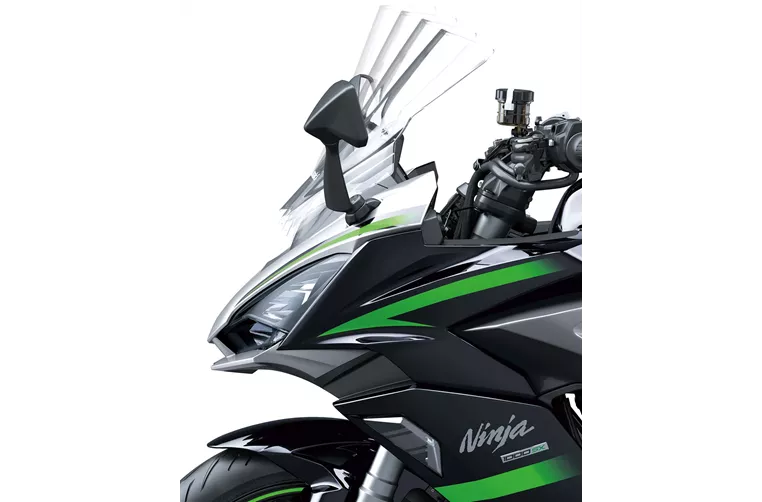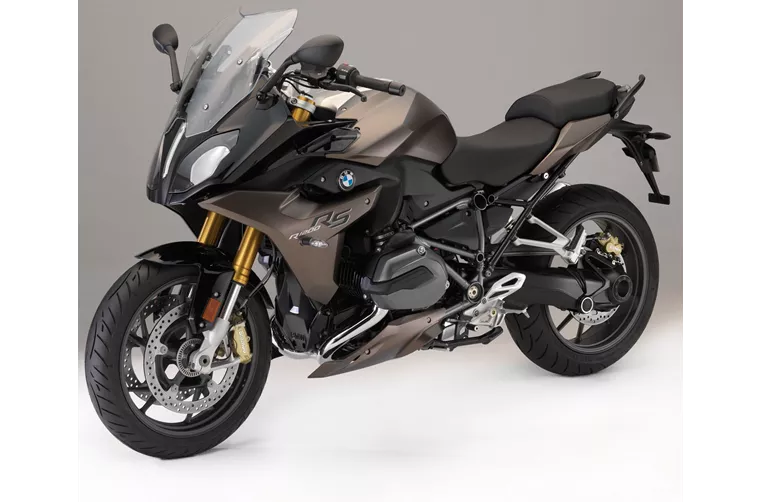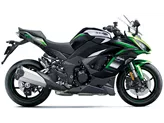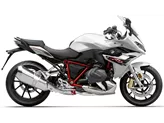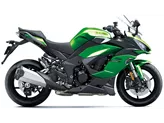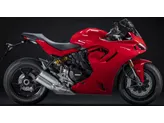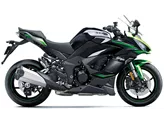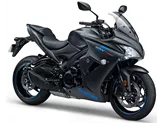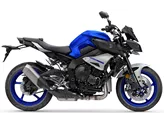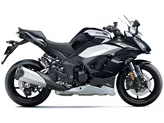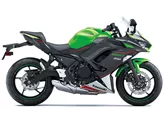Kawasaki Ninja 1000SX 2020 vs. BMW R 1200 RS 2018
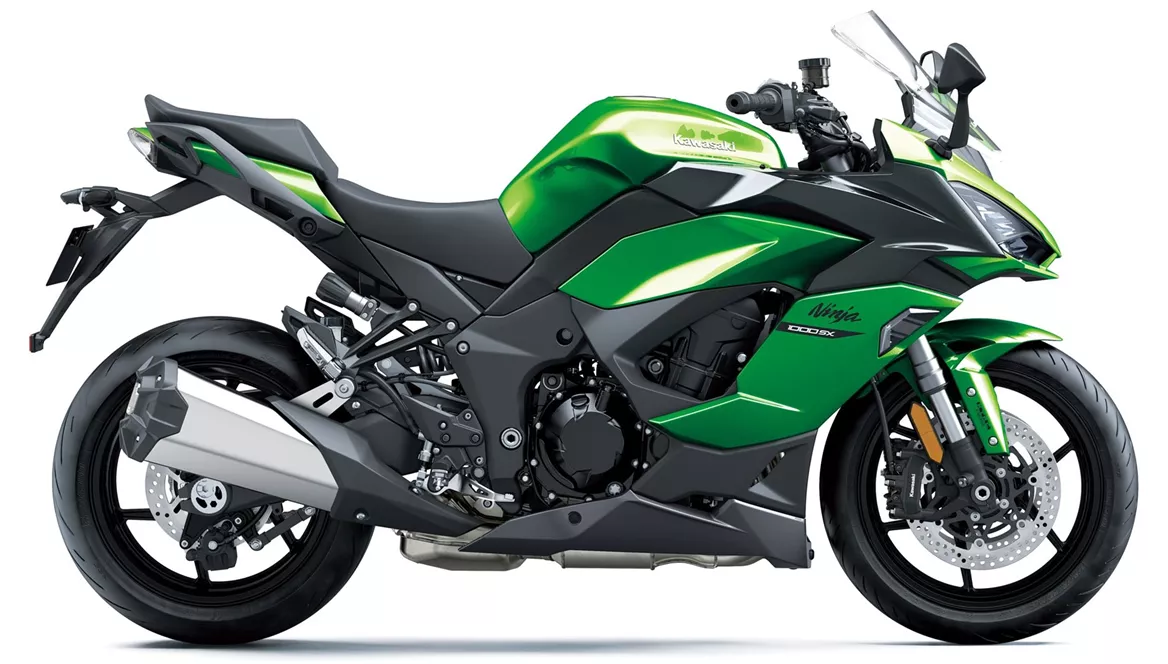
Kawasaki Ninja 1000SX 2020

BMW R 1200 RS 2018
Vue d’ensemble - Kawasaki Ninja 1000SX 2020 vs BMW R 1200 RS 2018
The Kawasaki Ninja 1000SX 2020 and the BMW R 1200 RS 2018 are both sport touring motorcycles that offer a combination of sporty performance and comfortable long-distance riding capabilities. While they have some similarities in terms of specifications, they also have distinct differences that set them apart.
In terms of engine performance, the Kawasaki Ninja 1000SX 2020 comes out on top with its inline 4-cylinder engine producing 142 horsepower and 111 Nm of torque. This gives it a more powerful and responsive acceleration compared to the BMW R 1200 RS 2018, which has a 2-cylinder boxer engine producing 125 horsepower and 125 Nm of torque. However, the BMW R 1200 RS 2018 still offers a decent amount of power and torque for most riding situations.
Both motorcycles have different transmission systems, with the Kawasaki Ninja 1000SX 2020 using a chain drive and the BMW R 1200 RS 2018 utilizing a prop shaft drive. The chain drive on the Kawasaki Ninja 1000SX 2020 offers a more direct power transfer and is generally lighter, but it requires more maintenance compared to the prop shaft drive on the BMW R 1200 RS 2018, which is more durable and requires less maintenance.
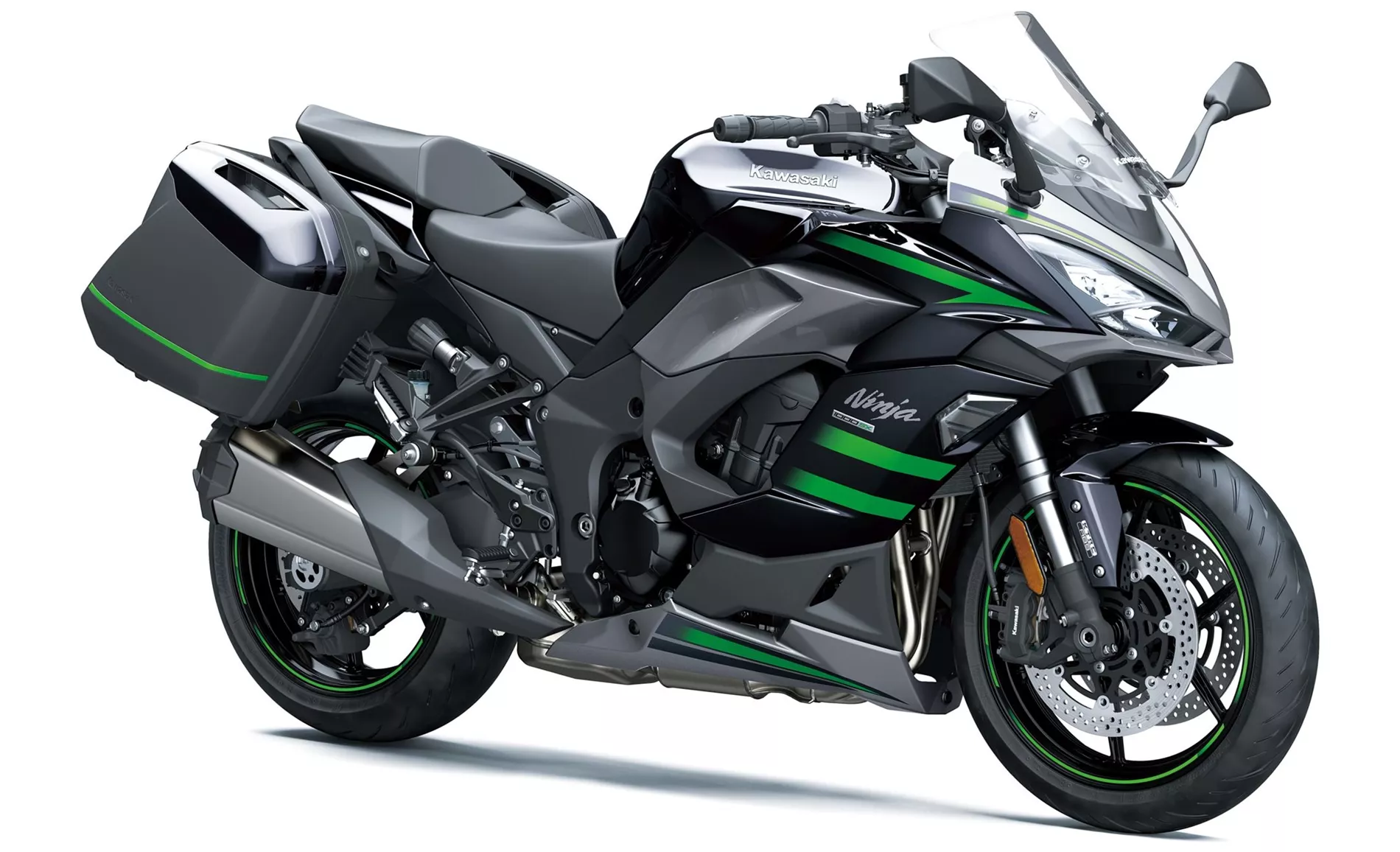
Kawasaki Ninja 1000SX 2020
In terms of suspension, the Kawasaki Ninja 1000SX 2020 features an upside-down telescopic fork at the front and a swing arm suspension at the rear. This setup provides a good balance between sporty handling and comfort. On the other hand, the BMW R 1200 RS 2018 has a telescopic fork at the front and a paralever suspension at the rear, which also offers a good balance between stability and comfort.
The chassis of the Kawasaki Ninja 1000SX 2020 is made of aluminum, which helps to keep the weight down and improve handling. The BMW R 1200 RS 2018, on the other hand, has a steel frame, which provides a solid and stable platform for the motorcycle.
Both motorcycles have double disc brakes at the front, but the Kawasaki Ninja 1000SX 2020 features radial, monoblock, petal technology, which provides better braking performance and heat dissipation compared to the radial brakes on the BMW R 1200 RS 2018.
In terms of dimensions and weights, the Kawasaki Ninja 1000SX 2020 has a slightly smaller wheelbase of 1440 mm compared to the 1530 mm of the BMW R 1200 RS 2018. This makes the Kawasaki Ninja 1000SX 2020 slightly more nimble and agile in tight corners. The seat height of the Kawasaki Ninja 1000SX 2020 is also slightly higher at 834.98 mm compared to the 820 mm of the BMW R 1200 RS 2018.
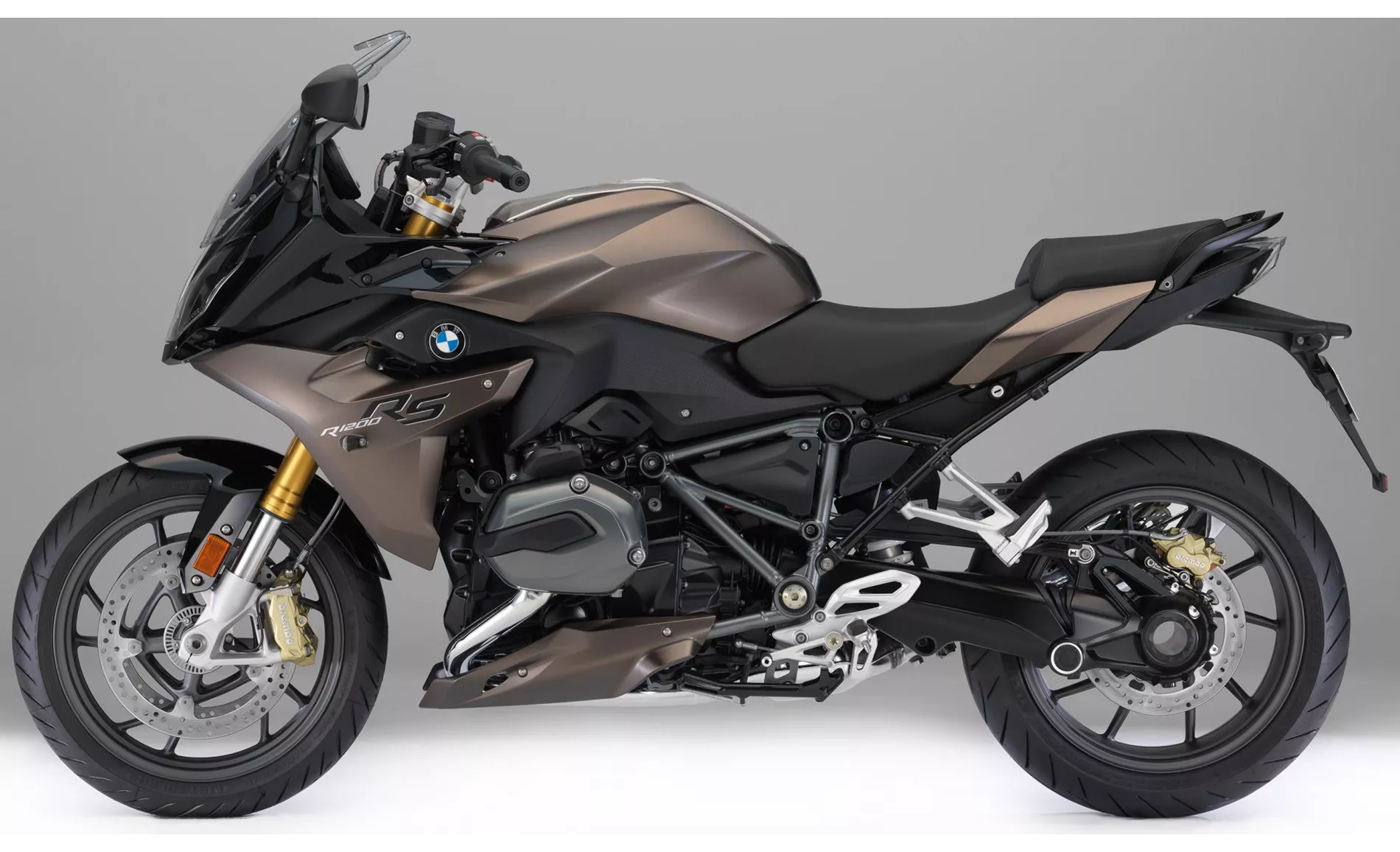
BMW R 1200 RS 2018
In terms of styling, the Kawasaki Ninja 1000SX 2020 has a modern and aggressive look with LED lights all around and a color TFT display. It also comes with cruise control as a standard feature. The BMW R 1200 RS 2018, on the other hand, offers a more classic and timeless design with great wind protection. With the Wunderlich conversion, it can have a very sporty and sleek overall appearance.
In terms of weaknesses, the Kawasaki Ninja 1000SX 2020 has the drawback of requiring both hands to adjust the windshield, which can be inconvenient. On the other hand, the BMW R 1200 RS 2018 has a slightly compact knee angle, which may not be as comfortable for riders with long legs.
Overall, both the Kawasaki Ninja 1000SX 2020 and the BMW R 1200 RS 2018 are capable sport touring motorcycles with their own strengths and weaknesses. The Kawasaki Ninja 1000SX 2020 offers a more refined and powerful engine, balanced handling, and modern features, while the BMW R 1200 RS 2018 provides precise and stable handling, comfortable seating position, and great wind protection. Ultimately, the choice between the two will depend on the individual rider's preferences and priorities.
Caractéristiques techniques Kawasaki Ninja 1000SX 2020 par rapport à BMW R 1200 RS 2018
Avantages et inconvénients en comparaison
Avantages et inconvénients en comparaison
Kawasaki Ninja 1000SX 2020

La Kawasaki Ninja 1000SX est plus une évolution qu'une révolution - mais que faut-il réinventer, même pour une moto de tourisme sportive équilibrée ? Mais le nouveau nom est tout à fait justifié, avec les nombreuses nouvelles caractéristiques rendues possibles entre autres par le système Ride-by-Wire, la moto de tourisme sportif est absolument à la hauteur. L'ABS en virage, le contrôle de traction moderne et les modes de conduite garantissent la sécurité et les possibilités de réglage en fonction des préférences personnelles, l'assistant de changement de vitesse favorise aussi bien le sport que le tourisme. De plus, le prix est canon (du moins en Autriche) !
BMW R 1200 RS 2018
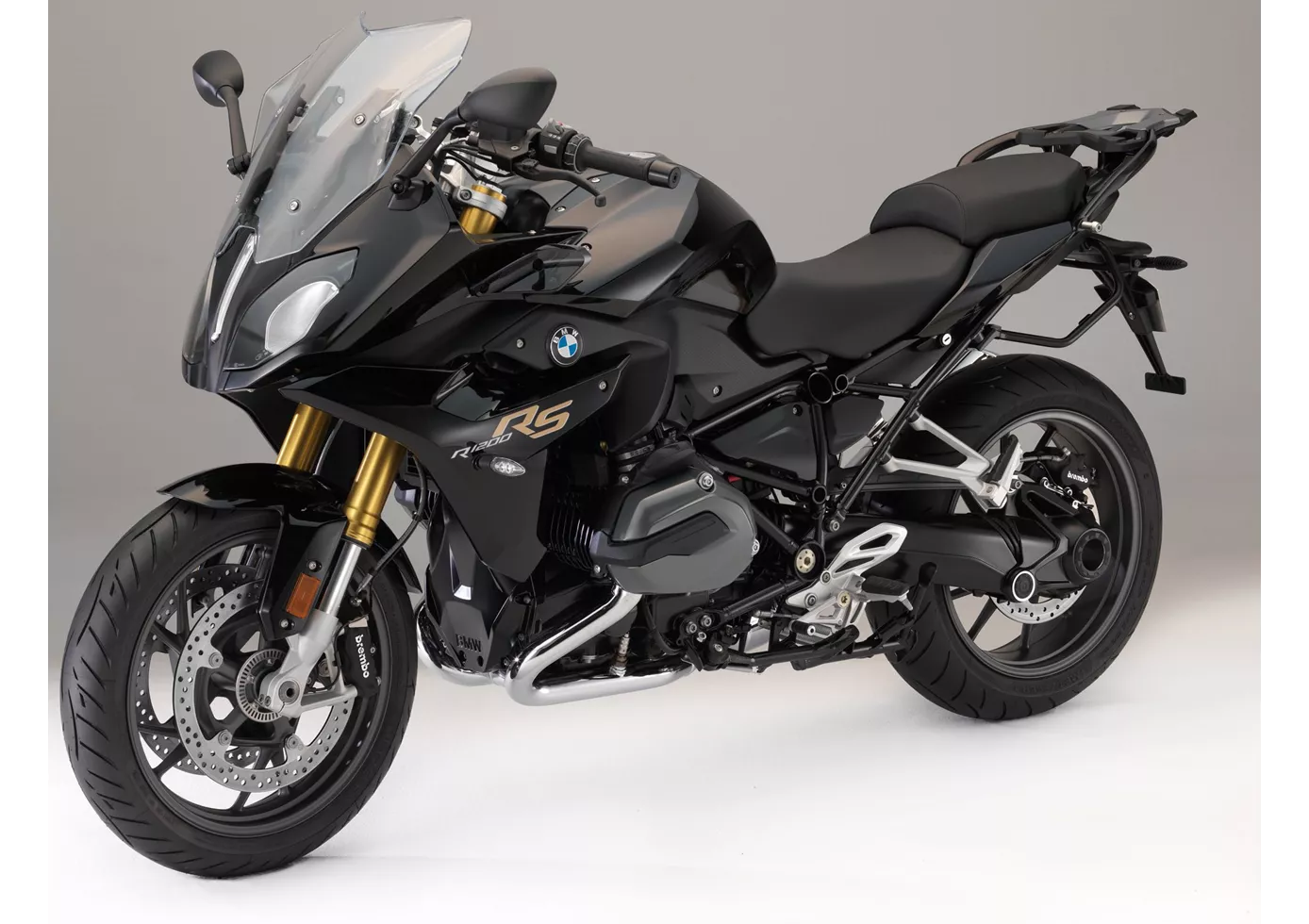
Wunderlich a optimisé avec précision la déjà superbe R 1200 RS et en a fait une véritable machine de rêve. Le guidon droit convient parfaitement à la moto de tourisme sportive. L'allure sportive de la moto est justifiée. En essayant cette moto Wunderlich, on place la barre très haut pour sa prochaine moto. Une moto de rêve.
Comparaison des prix Prix moyen du marché Kawasaki Ninja 1000SX vs BMW R 1200 RS
There are a few key differences between a Kawasaki Ninja 1000SX 2020 and a BMW R 1200 RS 2018. In terms of price, the actual average price of a BMW R 1200 RS 2018 is about 15% higher. Compared to BMW R 1200 RS 2018 there are less Kawasaki Ninja 1000SX 2020 bikes available on the 1000PS.de Marketplace, specifically 10 compared to 12. It takes less time to sell a Kawasaki Ninja 1000SX with 83 days compared to 89 days for a BMW R 1200 RS. Since model year 2020 1000PS.de editors have written 13 reviews for the Kawasaki Ninja 1000SX and 13 reviews for the BMW R 1200 RS since model year 2015. The first review for the Kawasaki Ninja 1000SX was published on 11/5/2019 and now has more than 40,500 views. This compares to more than 28,300 views for the first review on BMW R 1200 RS published on 9/30/2014.
